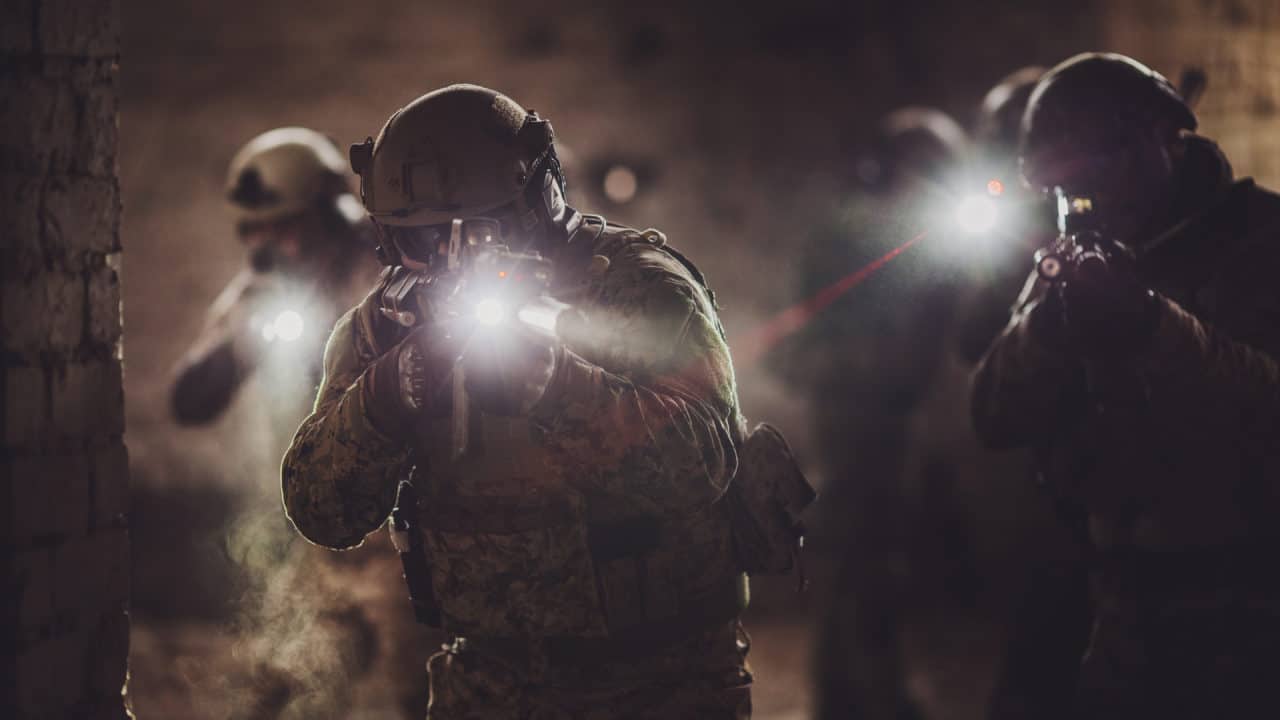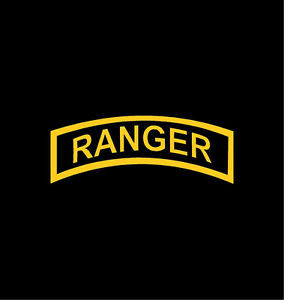by Brace. E. Barber
Army Rangers not only know history, they fully expect it to repeat itself. They expect greedy people, leading greedy governments will overstep their boundaries and will require a spanking. They expect they’ll have to do what they’ve always done and kill some really bad people in really nasty places – by surprise.
Those who prepare Rangers for future battles have studied history. I didn’t realize until I read Ben Comee, that not only do they study history, they duplicate it for Ranger School students. The Ranger principles, missions, and associated misery are the same as 270 years ago. What’s the value of suffering through the 62 days of food and sleep deprivation of Ranger School? Why are students constantly on the move always at the edge of muscle failure?
As a young man contemplating and then enduring Ranger School, I looked at it as a very personal experience. For me, it was limited in scope to the days I suffered through the experience and the lessons I took away from it. Somehow succeeding at that test was going to show that I was tough enough to be part of an elite group of soldiers. I knew at the time that it was a leadership school, and though the lessons were muddled, I later explored that subject in depth. After analyzing the Ranger School experience, I concluded that the best leaders have developed the habit of making the right decisions under difficult circumstances. What I didn’t realize is that the historical roots of Ranger School and the Ranger Units which count on it are deep and very much alive. It’s as if the people designing Ranger School sat in MAJ Robert Roger’s after-action reviews of 1758-1759 and learned what was necessary to develop the proper habits as a ranger.
Ben Comee gives us some key insights as he walks us through the mission to raid the St. Francis Indian Tribe in the fall of 1759. Over 22 days the Rangers traveled about 240 miles in canoes and on foot.
“If we had not been on a perilous expedition into the enemy’s country to some unknown point and for some mysterious purpose, about which we were worrying, this trip down the lake would have been delightful.”
I recall walking through the north Georgia Mountains on missions thinking how beautiful it was. There is a peace about being away from the noise, movement, and images of civilization. As the sun set, it would have been so nice to sit on my front porch in the quiet of nature enjoying a beer. If we hadn’t just achieved muscle failure by crawling up the side of a mountain at the beginning of a three-day patrol, it would have been delightful. Beauty can be found behind enemy lines too.
Roger’s mission deep into enemy territory was made more hazardous because when they were about halfway to the objective the enemy found out that they were in the area. Their brisk movement gained even more urgency as they outran their pursers.
One of the Rangers said, “We’re just like a procession of cold, miserable frogs, h-hopping along through the water. This is the biggest fool trip I ever heard of.”
I’m not sure I had even heard of Rogers’ Rangers when my squad was hopping from tree root to tree root to avoid the swampy water in between. How many people in this world, or at least in the western world have ever been out tromping through the woods at night? How many have tried to make it through a swamp at night? Not many. The training for traversing any kind of terrain comes from traversing that kind of terrain.
As a young lieutenant, I learned through the experience of wading into the dark, cold swamp water for the first time and then spending the night struggling through the swamp that I wasn’t going to get eaten by an alligator or bitten by a snake because it wasn’t a chlorinated bath-temperature swimming pool. Rangers have to learn these things through experience. Being comfortable in uncomfortable situations is part of having the mental home-field advantage on the miserable least-likely avenue of approach.
“Now, boys,” said Rogers, “we must keep under cover all day and hide until night comes on. You can’t have any fires. Get into sheltered spots and huddle together to keep warm, and shift ’round now and then to give everyone a fair chance.”
Every Ranger will smile at those conditions since too often, especially in winter classes, we were snuggling with our Ranger buddy to stay warm. For Rogers’ Rangers, the movement through the backcountry of Northern New York and New Hampshire gave no ease to the soldiers, and their mission required that they go from discomfort to discomfort.
Rogers explained, “This river has a swift current, and we must put our packs on our shoulders and join arms, with the tallest and strongest up the river, so we can help each other.”
There comes a point in Ranger School where you have to figure out how to cope with the absurdity of the situation. We slept for an average of 2.5 hours a night, ate one and a half meals a day, and exerted extraordinary physical efforts in the hours in between. We simply had to do what we had to do. There was no choice. People wonder what leadership looks like. It looks like a leader planning and directing a difficult river crossing in the freezing cold, and driving their soldiers to do it because that’s what the mission demands.
If you wait for a consensus or a majority, you will never cross the river. You will never accomplish the mission. Ranger School put us in those circumstances because Rogers and the necessities of combat taught us that it was necessary. People argue that Ranger School is not a leadership school. They are dead wrong.
At three o’clock we crept up to within five hundred yards of the village, and laid aside our packs, and prepared for the fight… about an hour before daylight (he) ordered us to attack the village on three sides.
The concepts of the Objective Rally Point (ORP) and Stand-to are present in this short passage. I don’t know if the ORP was developed earlier but, it certainly shows up here. What we know from Ranger tactics dating back hundreds of years is that they are designed to maintain the element of surprise. Rangers plan in depth and rehearse. They move at night and attack the enemy from the least expected direction. They carry their provisions and travel great distances requiring extreme physical exertion. These are the same characteristics of Rangers today, only now, they will drop on your head when you least expect it.
By sunrise, the bloody work was over.

The account of the raid on the St. Francis Indians is worth reading. The point is that Rangers use intensity of action along with surprise to destroy their enemies. This is combat. There are no whistles to stop gameplay and there are resets to try again. They don’t have tense moments explaining their motives to the enemy before destroying them. Rangers do the job in a way that achieves success and avoids taking friendly casualties.
The U.S. Army’s 75th Ranger Regiment lives by the same standards and they require soldiers that are mentally and physically prepared to push past normal barriers to achieve success.
The Rangers go further because they have to. They don’t stop until the mission is done. We pick up our story as the Rangers completed their raid on the Indian Tribe. They were exhausted, but they weren’t done. They were over 200 miles into enemy territory and they had just brutalized a strong French ally. The rangers had to make the long journey back to safety.
Thus we traveled over rocky mountains and through wet swamps, pursued by Indians, faint from hunger, worn out with fatigue and exposure, hardly able to walk. We had no blankets or shelter. The nights were cold and frosty, and when it rained we were soaked and chilled to the bone.
There was no rest. There couldn’t be. In Ranger School, the condition of droning was the norm. Droning is akin to sleepwalking. In the early morning, walking through woods after several days of almost no sleep creates a zombie-like state. We simply put one foot in front of the other – and again – and again – and again until we got to the end of the mission, not knowing when that might be. This was the training ground for eliminating any expectation of comfort. In my class, my platoon had just finished a horribly-run mission at 0200 – it was raining – and after getting chewed out by the Ranger Instructor he finally cursed and told us to go back to the beginning. “You are going to do this &*%#@ mission again!”
You can do the math in your head; another mission, plus movement to a new patrol base, minus the rotation of the earth and you realize that we didn’t get any sleep that night. That wasn’t unusual. And did I mention it was raining?
These training events are critical for soldiers who will be expected to go to unreasonable measures to accomplish a mission. Each of us had to deal with and get used to the “this is ridiculous” thoughts and do what was expected of us. Logic, as it relates to normal life, does not apply in combat. We had to remove the civilian perspective of what was necessary and possible and replace it with the new Ranger concepts. You cannot achieve this new perspective without training. That perspective gives the advantage to those who are being chased down by their enemies to be tortured and killed. Rogers’ Rangers pushed on for over two hundred miles with almost nothing to eat. They were starving and dying. Ben Comee writes,
I shall not tell all the horrors of that march,—the pangs of hunger that we suffered, the greed for food, the sights that I saw, nor what men did in their despair. Some things had better remain unwritten.
Each of us knows that there is a point where too much is too much. We have a breaking point. Situations can become so absurd that no amount of training value is worth it. Ranger School students were commonly starving, exhausted, and uncomfortable. We became comfortable in that physical condition. However, our decision to continue or quit was in our minds, not in our flesh. The real battle was mental.
Like it or not, the biggest threat to our success was not the toughness required to shiver through cold, wet nights, or walk 100 miles in 10 days with 80 pounds on our backs, it was in our expectations. When our expectations of a situation, even if we expected difficulty, were shown to be inadequate through the exposure of reality, our determination can break. Redoing a mission at 0200 is an example of an acute mental challenge, but it wasn’t the first.
The last day of City Week at Ranger School involves a five-mile formation run. It’s extremely difficult for many reasons, and our spirits rose as the formation turned the final corner towards the finish line. We could see the lights of the PT field and we anticipated the command to come to a walk. Some were pushing out their last bits of energy to make it to the end. Then the command to walk never came.
The formation did something it hasn’t done in the previous four days. It continued to run through the finish line. Countless soldiers fell out of formation and quit right there. They passed the finish line and stopped. By the time the rest of us made it back to the barracks they were gone.
These types of tests are very definitely head games, but if soldiers haven’t developed an adequate response to the mental challenge of believing they can’t go on, then they will die. They have to have a habit of unexpectedly pushing beyond their perceived physical limits. That’s a decision that they have to make in less than a heartbeat.
Rogers’ Rangers knew throughout their return that no matter how hard it became, relief was on its way. The Garrison was sending supplies to meet up with them at a designated point.
The expectation of food, the certainty that we should find plenty at the Ammonusuc, had nerved us up to the effort to reach it, and now it was gone. It had been there and was gone. We broke down completely and cried and raved. Some became insane.
Does leadership play a role among a group so ravaged by hunger and exhaustion, or are anarchy and disorder the only reasonable response? Does it help if a leader has developed the habit of making the right decisions under duress? Ben says of Robert Rogers,
Though his great strength had been wasted by starvation, to the point that he could hardly walk, he nevertheless remained the leader, and said, “Don’t lose your courage, men. I’ll save all of you.”
Rogers reset their expectations. He gave them hope, which is the most powerful of motivations. Then despite his poor condition set off to make good on his promise. Rogers, like great leaders, have an expectation that goes beyond the conditions. They expect that they are responsible for their people no matter what. They do not expect to rest until they have done all they can do to secure their people. Leaders will suffer mental sprains when their physical expectations are turned, but those are secondary to their responsibility for their team.
When the running formation crosses the finish line and keeps going, they are looking for those for whom they have responsibility. They are encouraging others. When the mission is being rerun at 0200 they are doing a headcount and building up their team. Their care for their physical condition, though important for sustainment, is secondary to the welfare of the team. The welfare of the team is critical for the accomplishment of the mission.
Rangers demand soldiers who are prepared physically and mentally for the absurd challenges that their missions require. They have to find comfort in discomfort and dismiss expectations as they become dashed by reality. Rangers need leaders at all levels who know that their responsibility is for their soldiers and their mission. Ben Comee reminds us that these Ranger demands were the same 270 years ago.
Ben Comee: A True Tale of Rogers’ Rangers 1758-1759 is available on Amazon.
#RogersRangers #RangerSchool #ArmyRanger #BenComee
______________________
This first appeared in The Havok Journal on June 19, 2020.
Brace E. Barber is the author of the books, Ranger School, No Excuse Leadership, The Art of War Organized for Decision Making, and TESTED A New Strategy for Keeping Kids in the Faith.
Brace is a Christ-follower. He is a 1987 graduate of West Point and a 1988 graduate of the U.S. Army Ranger School. Through 11 years of military service, he led three combat-arms platoons and two companies. Brace is a keynote speaker on topics of leadership and strategy development.
As the Voice of the Veteran Community, The Havok Journal seeks to publish a variety of perspectives on a number of sensitive subjects. Unless specifically noted otherwise, nothing we publish is an official point of view of The Havok Journal or any part of the U.S. government.
Buy Me A Coffee
The Havok Journal seeks to serve as a voice of the Veteran and First Responder communities through a focus on current affairs and articles of interest to the public in general, and the veteran community in particular. We strive to offer timely, current, and informative content, with the occasional piece focused on entertainment. We are continually expanding and striving to improve the readers’ experience.
© 2024 The Havok Journal
The Havok Journal welcomes re-posting of our original content as long as it is done in compliance with our Terms of Use.



